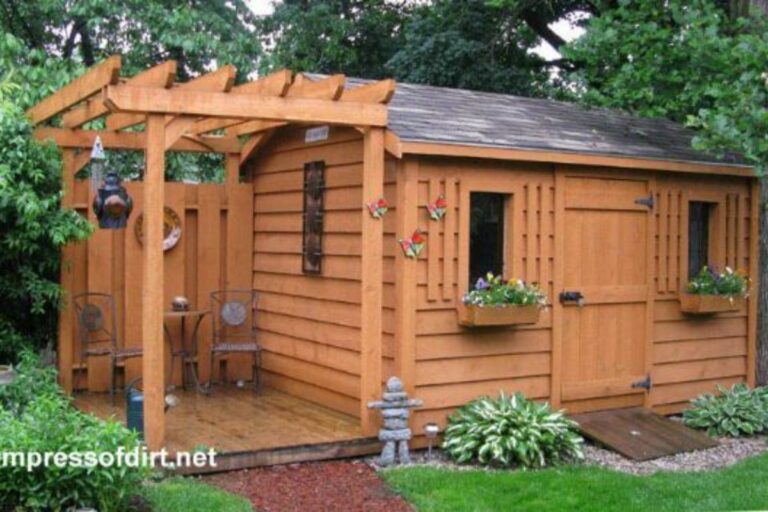Things You Need for Constructing a Greenhouse
Building one extends your growing season and protects your plants from harsh weather. As you start, there are basic materials and tools that you need. The typical greenhouse comprises three major components: the frame, glazing and ventilation system. The frame may be made from either wood, metal or PVC pipes, whereas glazing could be made of glass, polycarbonate or polyethene film.
Choice of Materials
When choosing materials, consider durability, cost, and insulation properties.
Wooden Frames: They are strong but can quickly rot and attract pests, requiring frequent maintenance.
Metallic Frames: They last longer, though more costly and may require extra equipment to assemble them.
PVC Pipes: These are light in weight yet inexpensive, but they deteriorate faster relative to wood or metallic ones; hence, they suit more miniature portable greenhouses only.
Glazing Options
Glass: Glass penetrates sunlight well, although it’s heavy and expensive in terms of maintenance costs.
Polycarbonate Panels: They have good insulation properties due to their low heat conduction and are light compared to glass, so they are easy to handle when installed. Finally, they can withstand harsh conditions like hailstorms.
Polyethene Film: Although cheaply priced, this material is simple to install, though its life span is short, with replacements being done frequently.
Tools Needed
Besides the frame and glazing materials, you will require basics like saws, drills, and screwdrivers, including measuring tapes and levels. Depending on how big or complicated your greenhouse is, you can use other kinds of apparatus, such as post-hole diggers or concrete mixers. Always wear protective gear such as gloves and glasses when working with power tools and observe safety measures.
Step-by-Step Guide on How To Create Your Greenhouse
The greenhouse construction involves several steps, such as determining where to put it. Look for open areas receiving enough light, preferably facing south, so that your greenhouse can have adequate sunlight. Ensure the site is levelled and has good drainage so your greenhouse doesn’t shift.
Positioning
Light: Select a position that receives sun rays throughout the day. The best orientation is facing south.
Drainage and Level Land: Ensure the ground allows water to flow freely without causing floods and is flat enough to keep the structure from tilting.
Preparing Foundation:
Some greenhouses may have concrete slabs, wooden frames or ground anchors, depending on their size and type. The foundation must be vital for your greenhouse to last long and stay stable.
Wooden Base: Fit for more miniature greenhouses, which are also easy to make yourself.
Ground Anchors: They keep a firm hold of a structure, especially during wind storms.
Frame Assembly
Follow your design plan or manufacturer’s instructions when putting together the frame. Every joint or connection must be securely fastened, ensuring the frame is squared off and even.
Tips on Assembling: Use a levelling tool to avoid leaning or tilting during the installation process; tighten all screws and bolts well enough hence no movement is allowed.
Glazing Installation
Start mounting glazing materials immediately after finishing with frame assembly, starting from the bottom towards the top so that panels overlap, ensuring tight sealing plus insulating—screw or clip glazing materials directly onto frames following the manufacturer’s recommendation.
Installation Tips for Glazing: All sheets should fit in firmly to not let drafts or moisture through; panes must touch one another; thus, no gaps should appear between them.
Ventilation Systems
To regulate temperature and humidity in a greenhouse, install ventilation systems such as windows, vents or fans. Good ventilation is essential to avoid overheating and ensure healthy plants.
Ventilation Tips: Auto vent openers can be used to control the opening and closing of the vent at the required atmospheric temperature. Fans can be put in place to enable air circulation, thus reducing moisture levels.
Conclusion
Building a greenhouse is impressive as it will extend your growing season and improve plant health. Through careful material choice, good foundations, and following every step of construction, you can make an efficient solid greenhouse which will last for years.
A well-functioning greenhouse during all seasons depends on its proper ventilation & regular maintenance; therefore, it is a remarkable growing space. Give yourself this fulfilling task where you grow flowers or vegetables in your home-built conservatory through hard work.
Explore More Gardening Tips and Ideas
- Growing Bonsai: Tips for Miniature Tree Enthusiasts
- Buying Bonsai: Tips for Selecting Your Perfect Tree
- Bonsai Potting: Essential Tips for Tree Care Success
- Bonsai Maintenance: Essential Care for Tiny Trees
- Mastering the Art of Shaping Bonsai: A Beginner’s Guide
Source: Building A DIY Greenhouse


